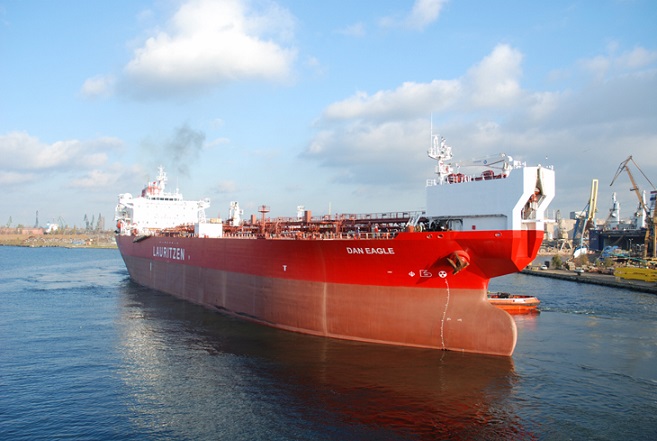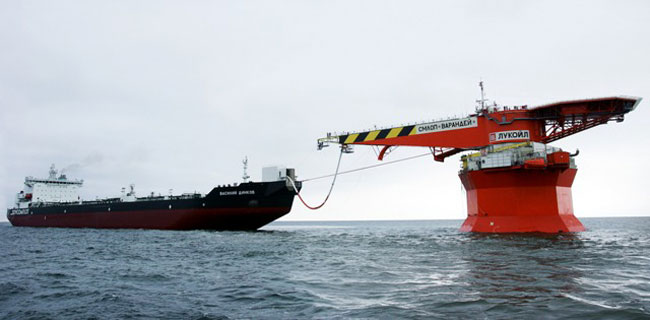 |
 |
||
| Offshore Fleet | ||||||||||||
| Shuttle tanker | ||||||||||||
A shuttle tanker is a specialized ship designed to transport oil from offshore oil platforms and other offshore oil producing installations to onshore refineries. Shuttle tankers are often used as an alternative to pipelines in harsh climates, remote locations or deepwater. Shuttle tankers were initially used in the North Sea in the 1970s. Since then, the value of using a shuttle tanker instead of pipelines has spread worldwide. Operators have recognized the flexibility of loading oil and transporting it to any destination they want as opposed to pipelines that are fixed to one receiving terminal.
Shuttle tanker Dan Eagle
Operators also favor the ability of shuttle tankers to segregate the oil. Pipelines often blend crude from various fields. Shuttle tankers are also easier to maintain and have a back-up-system in place if they require maintenance. If a pipeline requires maintenance, the whole network is likely to be shut in. Shuttle tankers have also proven to be safer than conventional crude oil tankers. Conventional tankers can only be used in calm waters. They load from offshore installations with assistance from tug boats to stay on location; whereas shuttle tankers operate independently in all water and weather conditions. Shuttle tankers are equipped with two or three bow thrusters and stern thrusters as well as dynamic positioning to keep the tanker on location. Flap rudders and controllable pitch propellers also help to increase low speed maneuverability. Field operators often award shuttle tanker owners long-term contracts to offload and transport oil from the field installation to the receiving terminal. The crew is highly trained to maneuver the tanker safely when close to offshore installations. They also go through extensive training to operate the offshore loading system and the dynamic positioning system safely.
Artic Shuttle Tanker Vasily Dinkov loaded her first cargo at Varandey.
Types of loading systems The offshore loading system transfers oil from a FPSO. The loading system is on the bow of the ship, which allows the shuttle tanker to load safely from various platforms, regardless of weather conditions. A special cone-shaped loading system can also be installed on the keel of the ship. The offshore platform has a field export system that connects to the loading system on the shuttle tanker. The type of export system onboard varies based on safety, weather conditions, water depth, seabed conditions and cost. The single point mooring system (SPM) is an offshore loading buoy where tankers can connect to load and offload oil. SPMs can handle any size ship. The body of the buoy, mooring and anchoring elements, product transfer system and other components make up an SPM. Together, these parts allow shuttle tanker operators to favorably position the vessel around the mooring point so it is less affected by weather conditions. A hose from the export system is then connected to the loading system on the vessel. Dynamic positioning systems have significantly reduced wear-and-tear on SPM equipment. After the introduction of dynamic positioning in the 1980s, the Ugland Kongsberg Offshore Loading System was introduced. This less expensive option can only be used with dynamically positioned shuttle tankers. Eight years later, the Submerged Turret Loading (STL) system hit the market in 1993. An STL has a submerged buoy that comes through a cone-shaped turret on the keel of the shuttle tanker. The STL is used in the most extreme weather conditions with sea states up to 6 meters. Introduced in the late 1990s, Single Anchor Loading (SAL) is used primarily in shallow water and in good weather conditions. The SAL is a simple, cost effective alternative to the STL. The Tandem Loading System, first carried out in 1991, requires the shuttle tanker to connect to the stern of the FPSO or FSO. Dynamic positioning is necessary to monitor the positions of two units.
|
||||||||||||
| « Back to all Offshore Fleet | ||||||||||||

|
|
 |
|
|
||||||||||||

